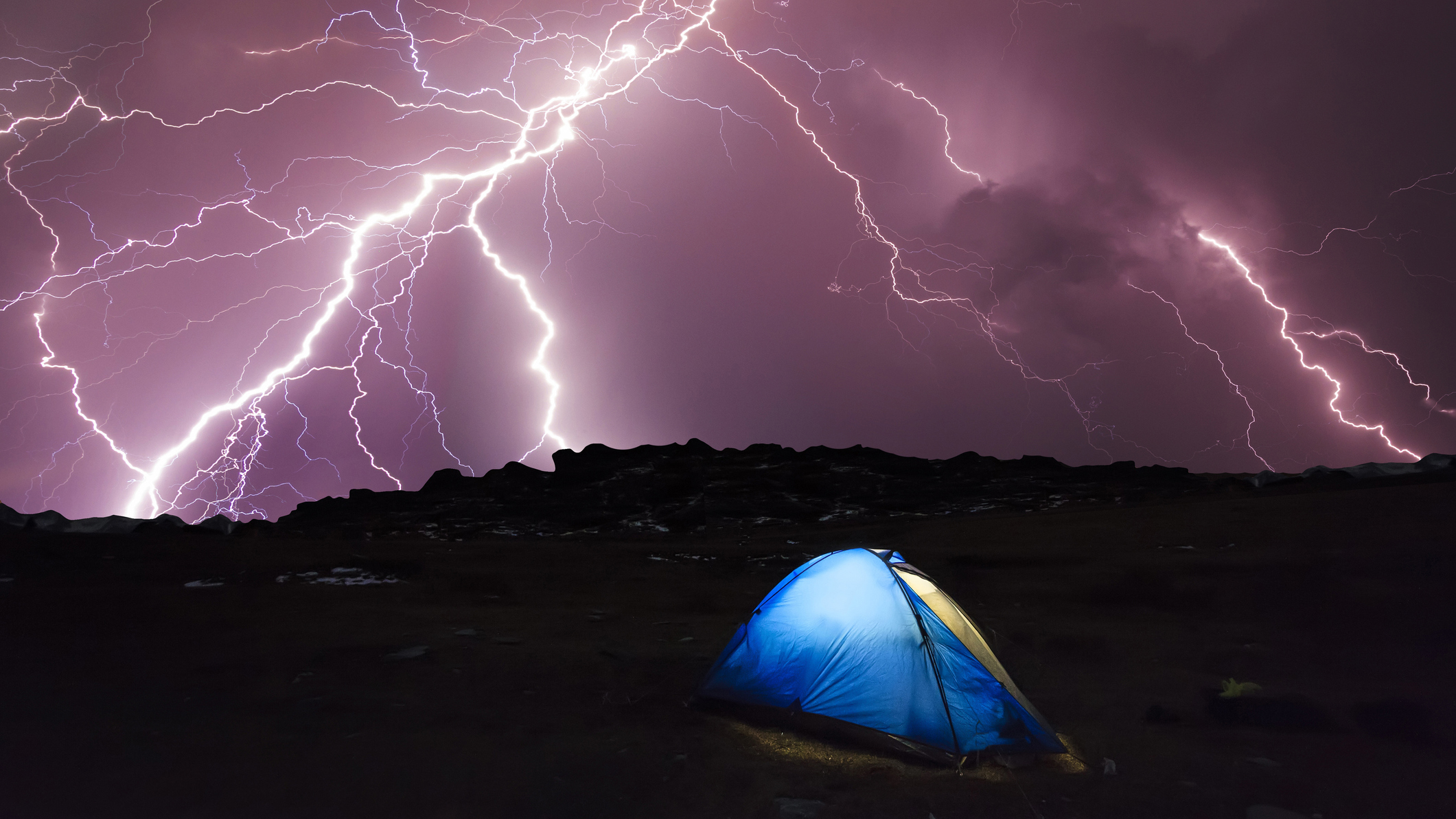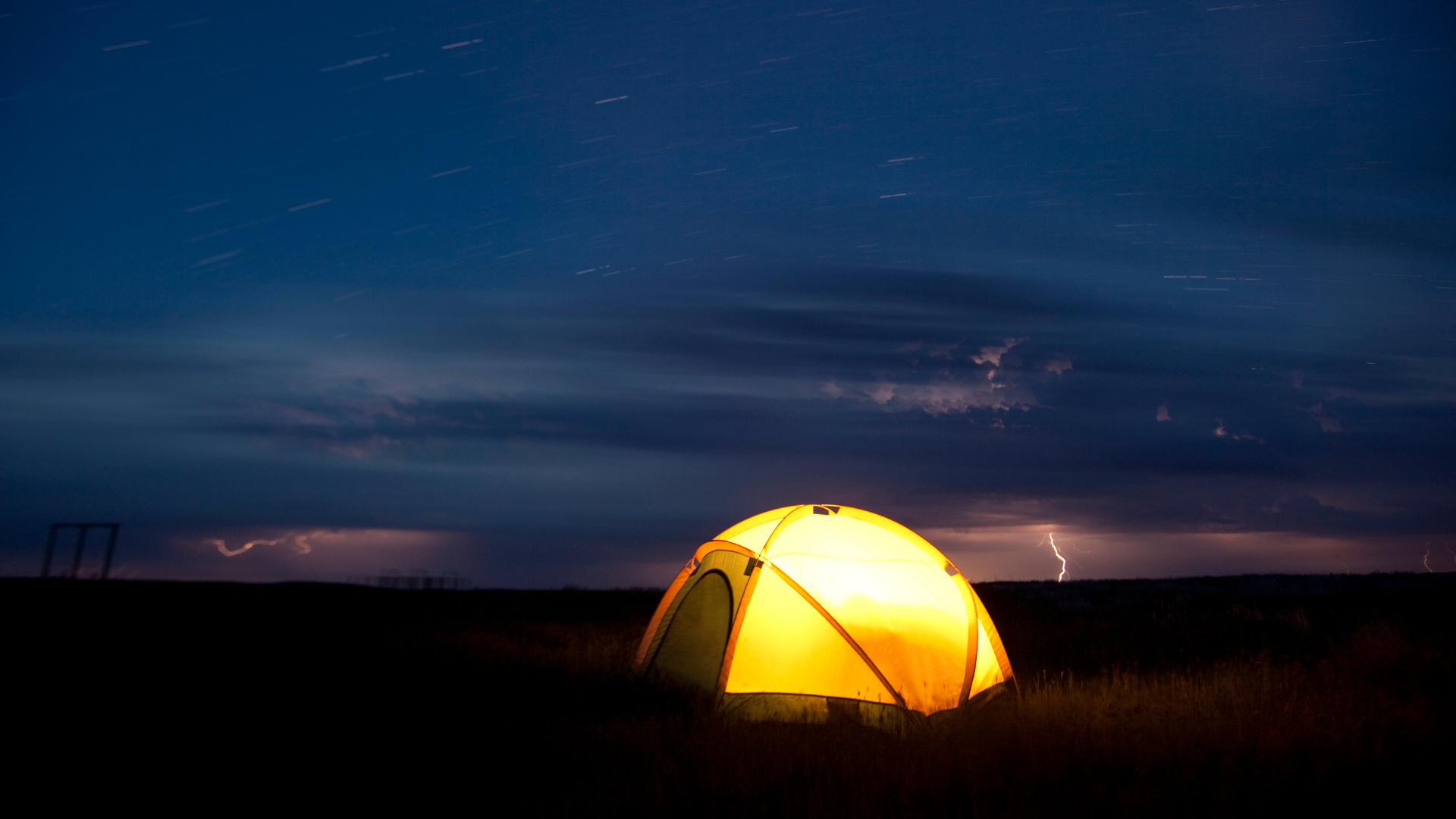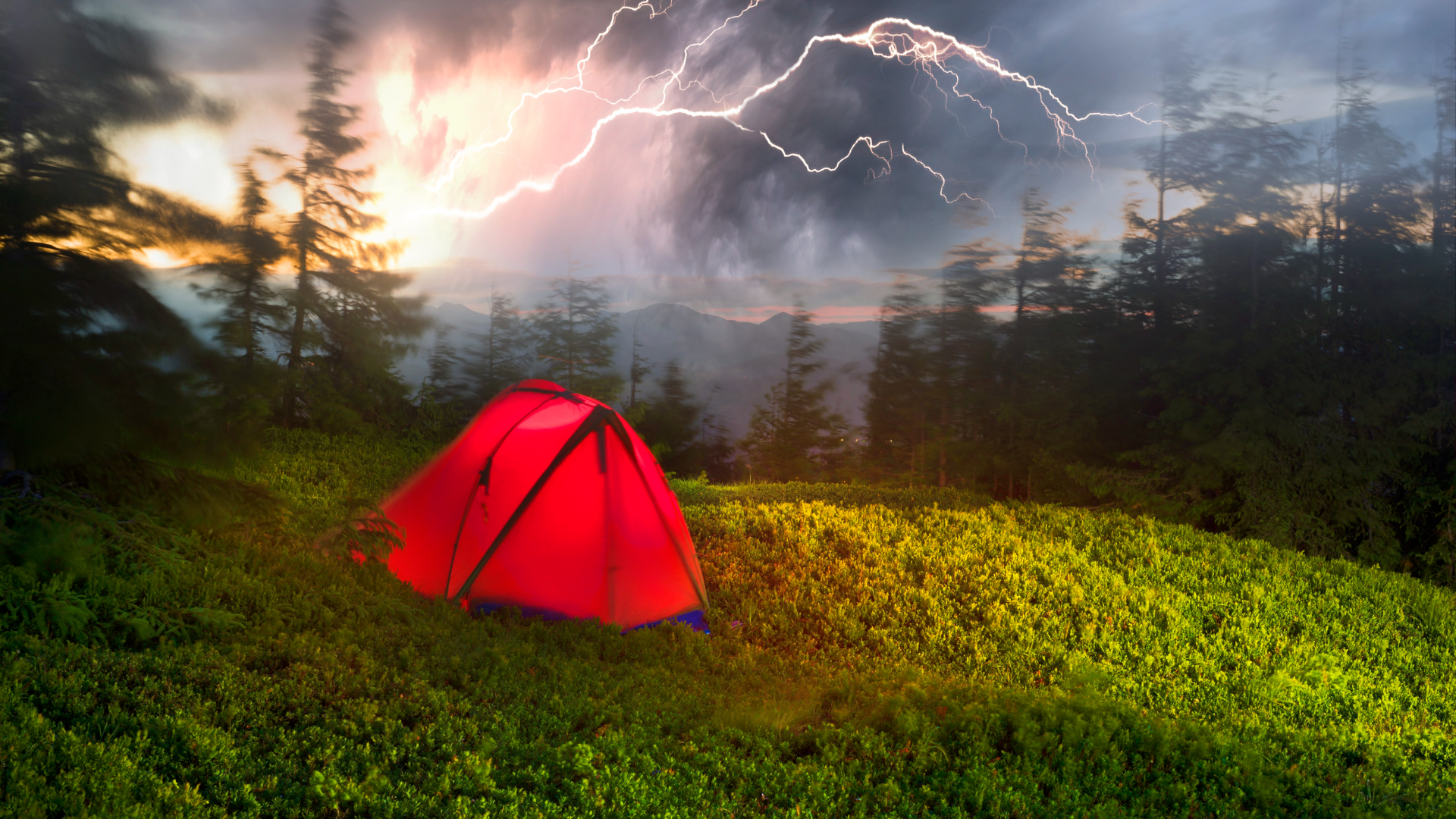How to avoid getting struck by lightning: vital safety tips for camping and hiking
It's unlikely but not so uncommon that you should ignore the risks. These expert tips on how to avoid getting struck by lightning will help keep you safe

They say lightning never strikes twice. Except that it’s not true, as witnessed by Virginian park ranger, Roy Sullivan aka ‘the human lightning rod’, who was struck seven times – and survived all of them. (Although he eventually shot himself.)
For the rest of us, the odds of getting struck by lightning on any given day is anywhere between a one-in-500,000 chance to one-in-a-million chance. It should be noted, however, that over a lifetime the odds drop to around a one in 12,000 chance. To put it another way, you’re about 678 times more likely to be struck by lightning than win the lottery. When you put it that way, it's clear that it's important to know how to avoid getting struck by lightning when out and about.
Of course, the odds of a lightning strike vary dramatically depending on what you enjoy doing with your spare time. If you like to hang out in high places, say the top of mountains in your waterproof jacket, then the chances of getting struck become more likely.
And it does happen. In August 2019, lightning killed five people and injured over a hundred during a sudden thunderstorm in the Tatra Mountains between Poland and Slovakia. A bolt struck the cross on the summit of Giewont and the current travelled along the chains that protected the ascent. So, for hikers, knowing how to stay safe can be the difference between life and death.
Today's best deals
Fortunately, nine out of ten people hit by a bolt do actually survive, although many victims are left with life-altering injuries. The wife of one of my best friends was struck by lightning as a child when out hiking with her family in the Cederberg Mountains north of Cape Town. She nearly died and it took her years to fully recover from her injuries.
A small amount of knowledge about the dangers of lightning can make a big difference. Here are our top tips for avoiding lightning strikes.
Check the weather forecast
- Change your plans if the weather forecast predicts thunderstorms
It sounds simple, but knowing what the weather will be like, particularly at the time you are likely to be on a summit, can make a big difference, as it allows you to change your plans to avoid the worst of the weather. If an electrical storm is forecast at a time when you had intended to be in a position of elevation, or you might be exposed on a ridge or peak, do change your itinerary – don’t risk it. If you were going to camp anywhere exposed, or beneath trees – make new plans. If you were thinking of going kayaking or canoeing on a lake or piece of open water, don’t. Save it for another day.
Advnture Newsletter
All the latest inspiration, tips and guides to help you plan your next Advnture!
Calculate the distance
- Count the number of seconds between seeing a lightning bolt and hearing the sound
- Divide this number by 5 to get the distance in miles
- If the lightning takes 30 seconds or less to reach you, seek shelter

If you do get caught out in a storm, which can easily happen even if you check the forecast, and you’re in an exposed position, some simple math can let you know whether you need to seek shelter or not.
Simply count the number of seconds between seeing a lightning bolt and hearing the sound, then divide that time by five to get the number of miles the strike is away (or divide by three to get the number of kilometres). As a rough guide, it’s suggested that if the lightning takes 30 seconds or less to reach you, seek shelter and stay in that shelter for 30 minutes – but use your own judgement.
Find the right shelter
- Get to low altitudes as soon as possible
- Avoid sheltering under tall objects and the mouths of caves
The worst place to be caught in a lightning storm is on a high point or ridgeline. Get to lower altitude as quickly as possible, preferably a valley or a depression of some kind. Avoid taking shelter under tall objects like trees, towers or poles. Avoid being the tallest object in a field. Also stay away from the mouths of caves, as the lightning can use a person to jump the gap from the ground above to the ground below.
Metal is bad
- Lightning is attracted to metal
- Get rid of any metal objects, leaving them a good distance from where you plan to shelter

One of the simplest 'how to not be struck by lightning' rules to remember is that lightning is attracted to metal. Get rid of any metal objects and make sure they’re a long way from where you plan to take shelter. This could be anything from the aluminium stays in your pack to trekking poles, climbing gear, ice axes and crampons.
Assume the position
- Crouch down into a ball to minimise your height
- Stay up on the balls of your toes and keep your heels together
- Individuals in a group should spread out
Crouch down into a ball to minimise your height. It’s recommended you try and stay up on the balls of your toes and keep your heels together (which, if you try it, isn’t that easy), with your boots on, if they have rubber soles. If you’re in a group, make sure you spread out.
And, just in case it does happen, you might want to keep some water handy – Roy Sullivan always carried a can of water in his truck, to help put his hair out when lightning strikes set his head on fire.
